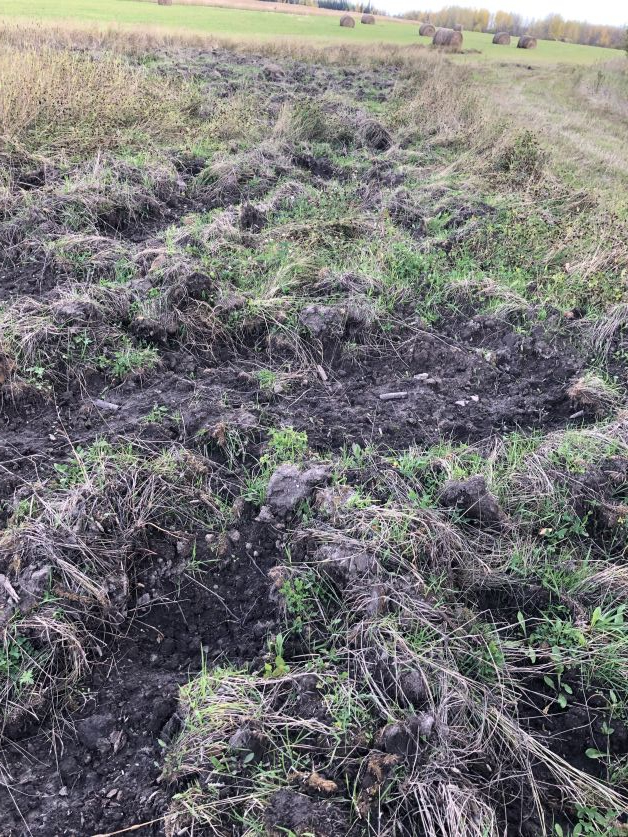
Wild boars, also known as feral pigs, are an invasive species which can cause extensive damage to crops, farmland, and equipment.
The Alberta Invasive Species Council has put out an initiative to encourage Albertans to keep an eye out for signs of wild boars in the area and “squeal” on them.
Alberta Agriculture and Forestry inspector and pest program specialist Perry Abramenko tells the Mail, “It seems like we get new sightings (of wild boar) every month, so we’re asking all residents to keep an eye out for wild boar signs.”
Abramenko notes, while there have not been any reports of wild boar in either Kneehill or Starland County, there is still a possibility there could be feral pigs in the counties.
He says there are some very telltale signs of boar activity in an area, though some may not be as easily identifiable from the ground.
“A very common sign you’ve got wild boar on your property is rooting,” Abramenko says. He explains wild boar, similar to domesticated pigs, will use their snout to root in soil to find food--such as tubers and insects. Wild boar, he notes, has a very pronounced snout with a “cartilated disc” and explains it works like a “little backhoe.”
Rooting can have a long lasting impact and may lead to erosion and weeds. Abramenko adds rooting activity can create holes which may not be immediately visible, and farm equipment may be damaged by an unseen hole caused by rooting activity.
Crop damage may not always be evidently caused by pigs, and producers may attribute it to other species such as deer or elk.
Feral pigs can also trample and pack down crops where they feed and nest, and this damage is not always visible until harvest--or utilizing drones to survey for these flattened areas and network of trails.
Abramenko adds water sources are another area to check for potential wild boar activity. “Pigs don’t have functioning sweat glands, so they need to wallow,” he explains. Wallowing activity will muddy the water source and can cause erosion.
There is also a chance livestock could have run-ins with wild boar--particularly at feeding times--which can put livestock at risk of disease and injury.
Pig activity can be much easier to spot in winter due to trampled snow in trail networks to and from nesting and resting areas.
Abramenko says wild boar are classified as an agricultural pest, allowing land occupants to control or eliminate them. He adds the Alberta Invasive Species Council is working in partnership with Alberta Pork to have professional trappers capture wild boar using state of the art equipment.
If wild boar activity is suspected in an area, there are several ways to report--call 310-FARM (310-3276), email af.wildboar@gov.ab.ca, or use the EDDMapS Distribution Map app from your phone to send in a report with a photo of animal or sign of activity, which will be plotted on the map. The app is North American wide and is also used to report other invasive species, from plants to wildlife.